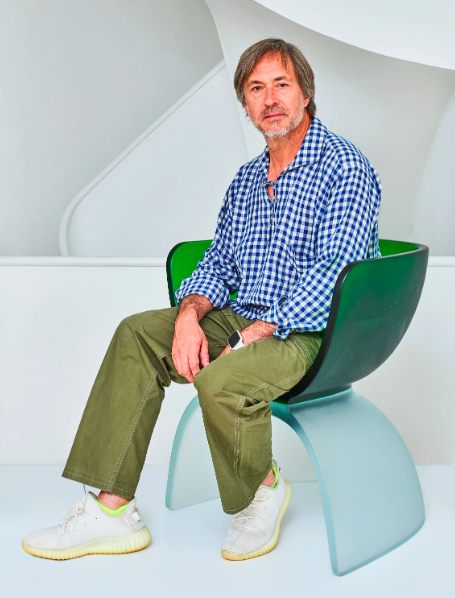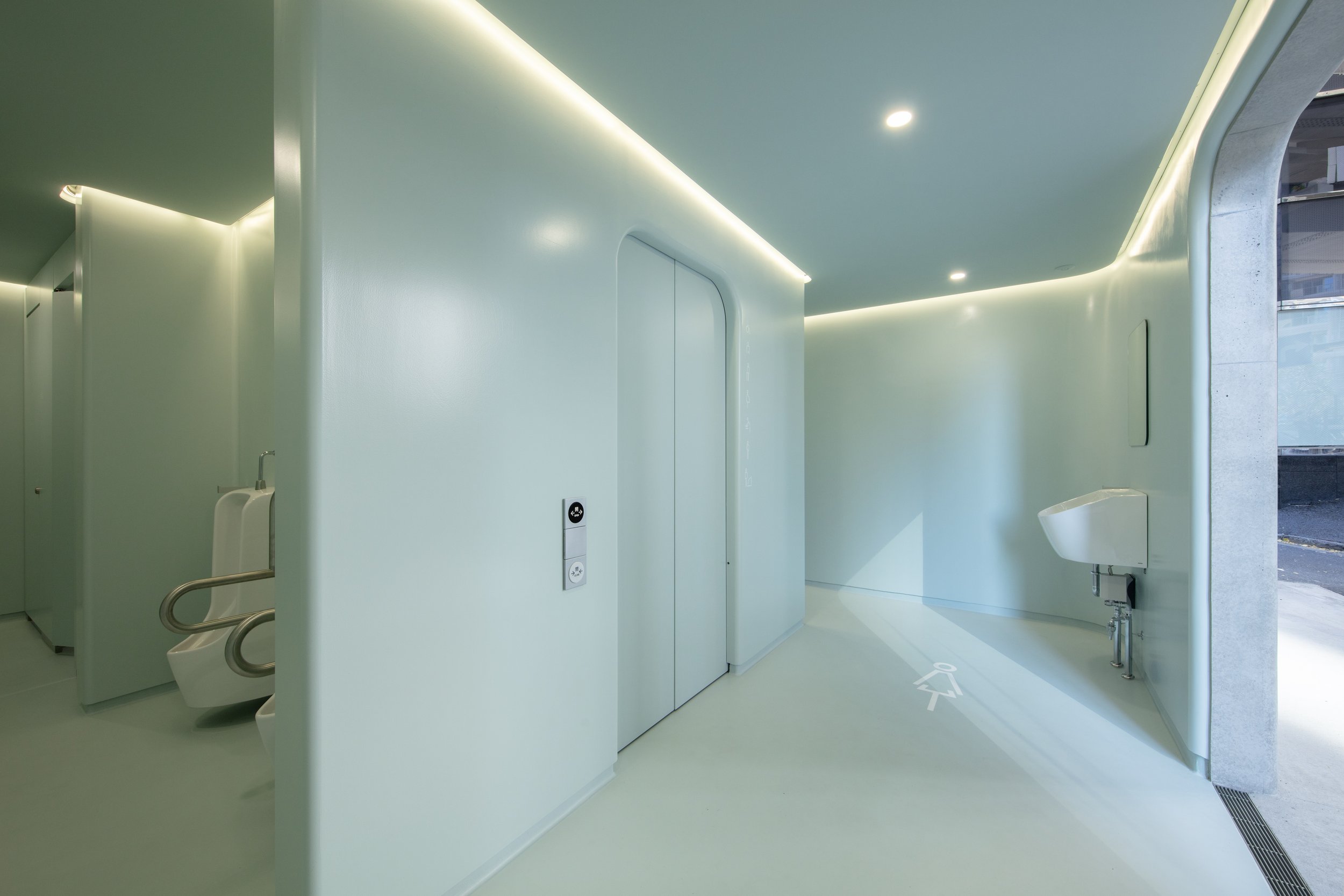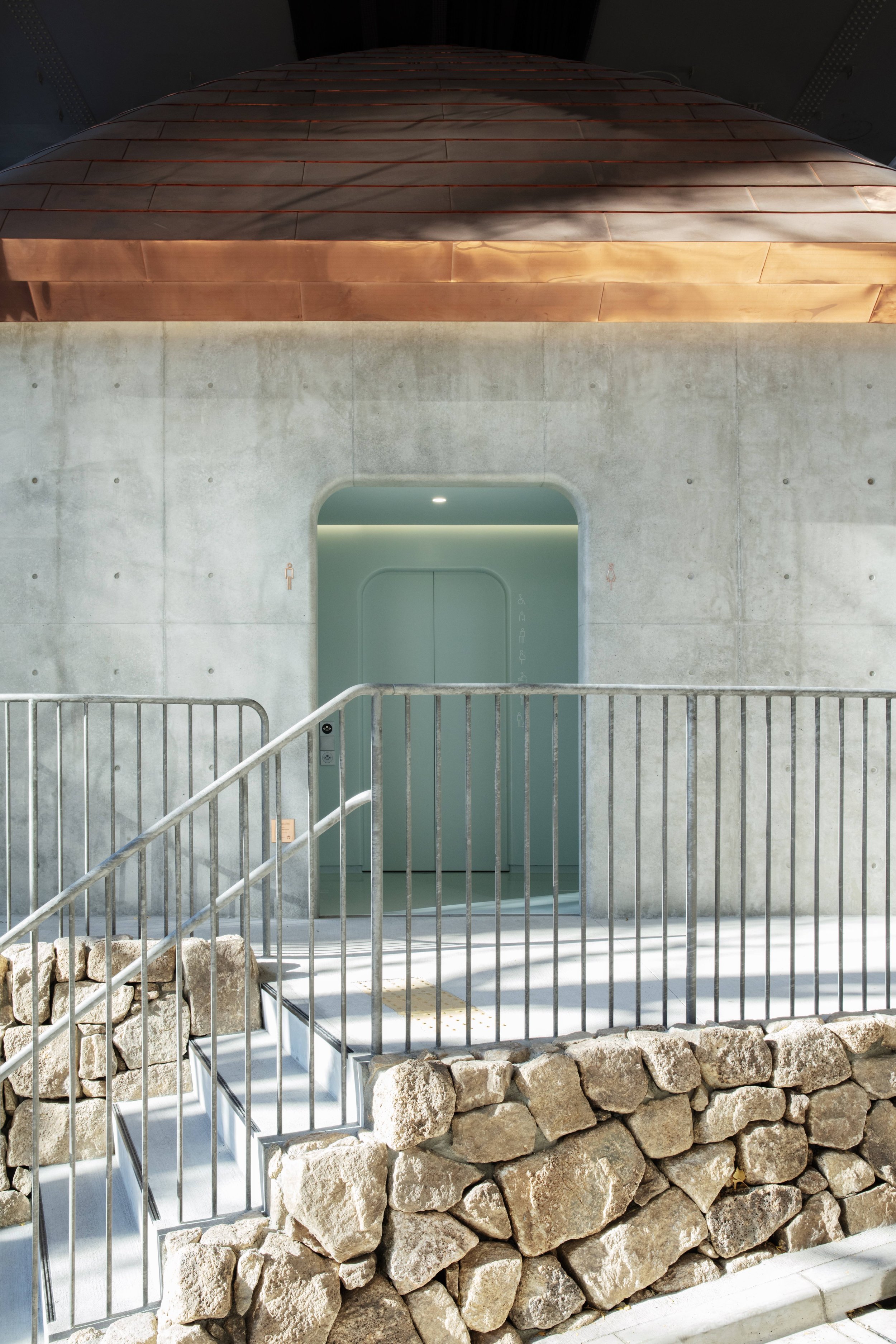Marc Newson: a DIA Hall of Fame feature
For over 25 years, the DIA - Hall of Fame program has celebrated the work of distinguished Australian design visionaries and leaders, and has an enduring record across all design disciplines. Inducted into the DIA Hall of Fame in 2013, Marc Newson has been named one of the most influential designers of his generation. The DIA reports on Newson's latest work, including his show at Gagosian in Paris, to being commissioned by The Nippon Foundation for the social innovation project, the Tokyo Toilet.
Marc Newson Photo: Prudence Cuming Associates Ltd Courtesy Gagosian
Over the years, Marc Newson’s far-reaching body of work has embraced a multitude of design disciplines and platforms. Whether it be designing and creating furniture, household objects, bathroom products, mobile phones, built-in cooking appliances, bicycles, cars, aircraft, yachts and even luggage, he is renowned for his endless and advanced exploration of form and medium. Redefining traditional materials' possibilities through contemporary fabrication techniques, Newson creates iconic designs that resonate with the past and present.
On the opening of his latest show, on 25 January, at Gagosian Paris, Marc Newson comments:
"Design is about improving things and about looking to the future, pushing the technology forward. For me, as a designer, it is a great opportunity to improve on what is already out there, to simplify, beautify, and technologically improve."
Exemplifying Newson's concerns with shape and form, the Paris exhibition of new and recent limited-edition furniture features Cloisonné White and Blue Lounge and Cloisonné White and Blue Chair (both 2022). Using material rarely seen in contemporary furniture design, Newson's innovative use of traditional techniques gives the pieces a unique, almost otherworldly appearance. The designer ornaments the copper works with elaborate all-over patterning in his signature circle and molecular "orgone" motifs in white and blue. Recalling his roots as a jeweller and silversmith, Newson employs the ancient technique of cloisonné—typically used to craft small decorative objects yet gives the pieces a striking, futuristic appearance. His decision to apply enamelwork to furniture necessitated the adaptation of traditional production methods to a new scale; artisans in Beijing affix cloisons, or partitions of copper wire, to the furniture forms, inlay enamel into the precisely defined designs, and then fire the pieces up to twelve times in vast, custom-made kilns.
Marc Newson Cloisonné White and Blue Lounge, 2022, Cloisonné enamel and copper, 30 x 69 11/16 x 30 11/16 in, 76.2 x 177 x 77.9 cm, Edition of 3 + 2 AP © Marc Newson Photo: Paris Tavitian Courtesy Gagosian
Marc Newson Cloisonné White and Blue Chair, 2022, Cloisonné enamel and copper, 26 3/16 x 40 3/16 x 37 3/16 in, 66.5 x 102 x 94.5 cm, Edition of 3 + 2 AP © Marc Newson Photo: Paris Tavitian Courtesy Gagosian
Blue Glass Chair (2017) is a seat in solid cast glass comprised of quarter-spheres and continues the exploration of blue hues that unites the objects in this exhibition. Its blue top half rests on the symmetrical lower half of uncoloured glass, which absorbs and reflects some of its intense colours. As with the cloisonné works, its production pushes the technical possibilities of its materials, requiring a highly controlled, months-long process in a glass oven of substantial size.
Extruded Ribbon Console (2022) is another work carved from a single piece of Azul Macaubas stone. In these works, Newson reveals the boldness of his vision, melding function and form to extend the possibilities of contemporary design.
Marc Newson Extruded Ribbon Console, 2022, Azul Macaubas, 29 1/2 x 90 9/16 x 15 3/4 in, 75 x 230 x 40 cm, Edition of 3 + 2 AP © Marc Newson Photo: Paris Tavitian Courtesy Gagosian
For his latest project for the Tokyo Metropolitan Government and commissioned by The Nippon Foundation in Japan, Marc's Tokyo Toilet at Urasando opened on 20 January. One of seventeen public toilets recreated in locations in Shibuya, Tokyo, Nippon aims to make them accessible to everyone and to eventually build a society where everyone can take up design and social challenges to help make things better. Along with Newson, Kengo Kuma, Sou Fujimoto, Shigeru Ban, and Tadao Ando are among the esteemed sixteen creators and architects involved in the project.
"Central to my design is the reference to Japanese vernacular architecture, including the copper Minoko roof. Often found in shrines, temples, tearooms, and rural areas, I wanted the roof form to trigger a subconscious feeling of comfort and peace amid its busy, hypermodern location. The patina on the pyramidic copper roof will integrate the structure into the city over time, so it becomes part of the fabric of Tokyo.
“It is important to me that the Toilet feels trustworthy and honest inside and out: the bright interior is seamlessly and hygienically finished in a monochromatic green, one of my favourite colours. My design for the Toilet focusses on functionality, simplicity, and creating an inviting and enduring space,” Newson says on his facility at Urasando Park.
Images above: Marc Newson Tokyo Toilet, Photos: Satoshi Nagare, Courtesy The Nippon Foundation
Nippon’s mission is about building an inventory of ideas and implementation expertise to create new frameworks for a better society and to bring about change. The Foundation prioritizes 'Social Change', which involves changing the mindsets and actions of individuals, companies, and other organizations, and believes that actions arising from an awareness of issues close at hand are the starting point to change in society as a whole. And that 'Social Innovation' is achieved through a series of social changes that lead to changes in laws, regulations, and social customs.
One of the critical points of the Tokyo Toilet project is that it was launched in Shibuya for its great potential for information dissemination and to introduce the project to the rest of the world. Jumpei Sasakawa, executive director of The Nippon Foundation, explains:
"People often have stereotypes of public toilets, and that they are dark, dirty, smelly, and scary. We wanted to demonstrate the possibilities of an inclusive society by building accessible public restrooms for everyone regardless of gender, age or disabilities.
“We believe that the power of creativity can help change people's perceptions towards public restrooms and that by making small changes, we may be able to create something new. If we can show the power of creativity through this project, preconceptions in other fields can also be dispelled, and things can be changed for the better."
Over four decades, Marc Newson has continued to be at the forefront of contemporary design. His latest Gagosian exhibition showcases his signature style and innovative approach to design. Meanwhile, his Tokyo Toilet project demonstrates his ability to take on new challenges and push the boundaries of design and social innovation even further. With these two projects, Newson cements his position as one of our time's most influential and exciting designers.
Images above: Marc Newson Tokyo Toilet, Photos: Satoshi Nagare, Courtesy The Nippon Foundation
Many of Marc Newson’s designs have achieved the status of modern design icons. They can be viewed amongst major museum collections, including MoMA in New York, London’s Design Museum and V&A, the Centre Georges Pompidou and the Vitra Design Museum. To read more
Induction into the DIA - Hall of Fame is the ultimate recognition for achievement and contribution to the Australian design industry and acknowledges design leaders across all disciplines. To date, 136 designers have been inducted since the program's inception in 1996. The DIA’s 2023 recipients will be inducted in October this year.
Written by Alexandra Zafiriou, DIA’s head of brand and editor, in collaboration with Marc Newson, Gagosian and The Nippon Foundation.










